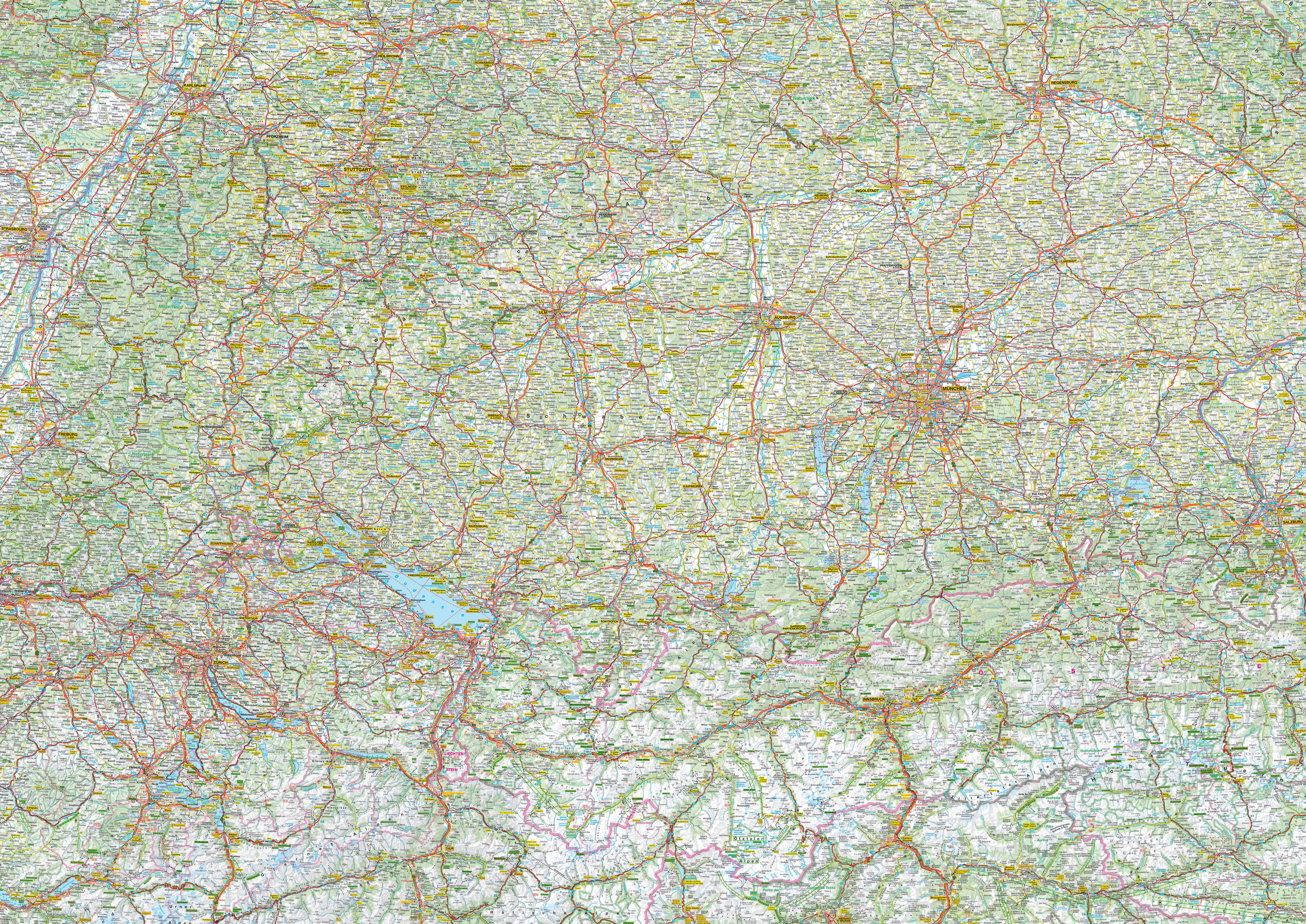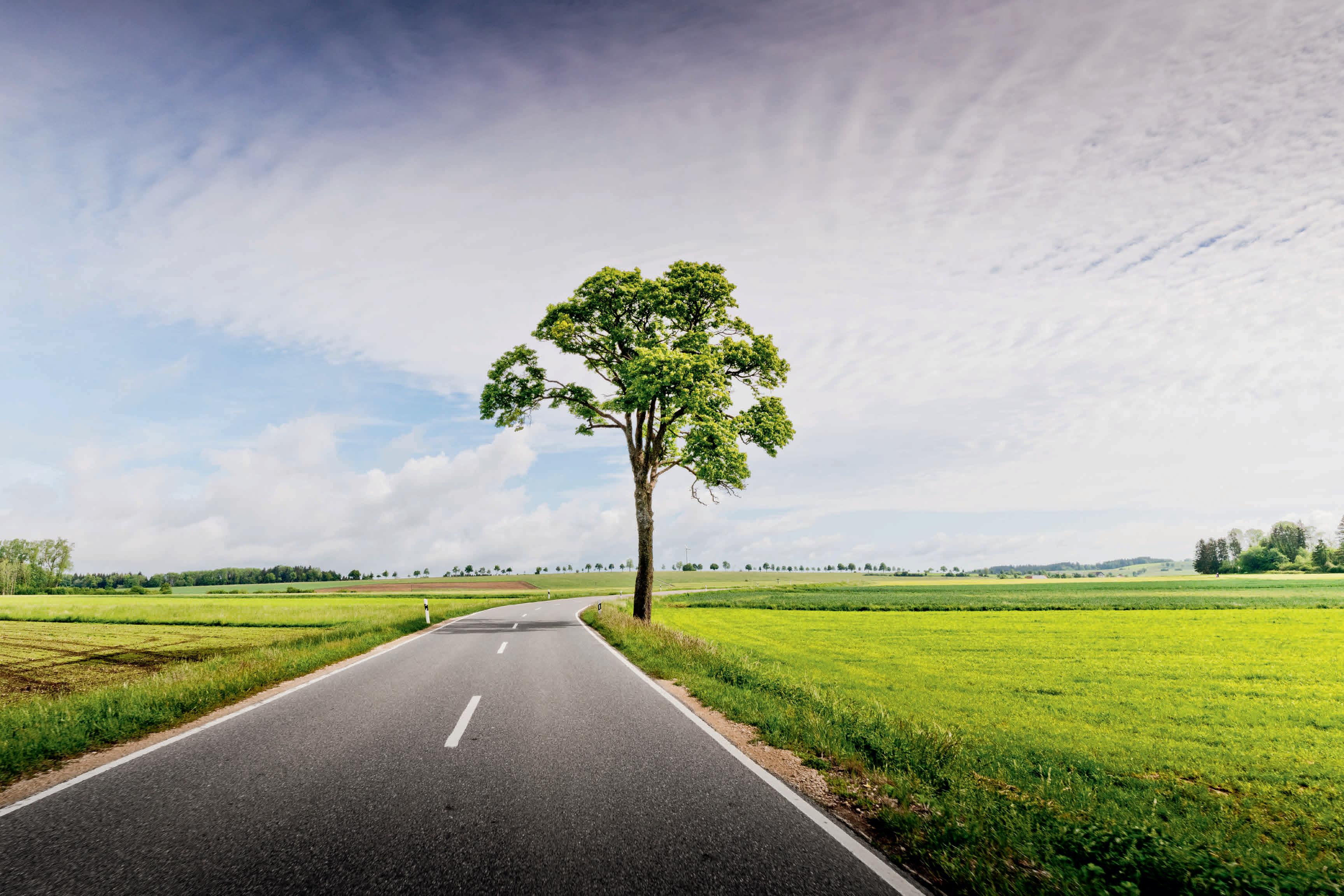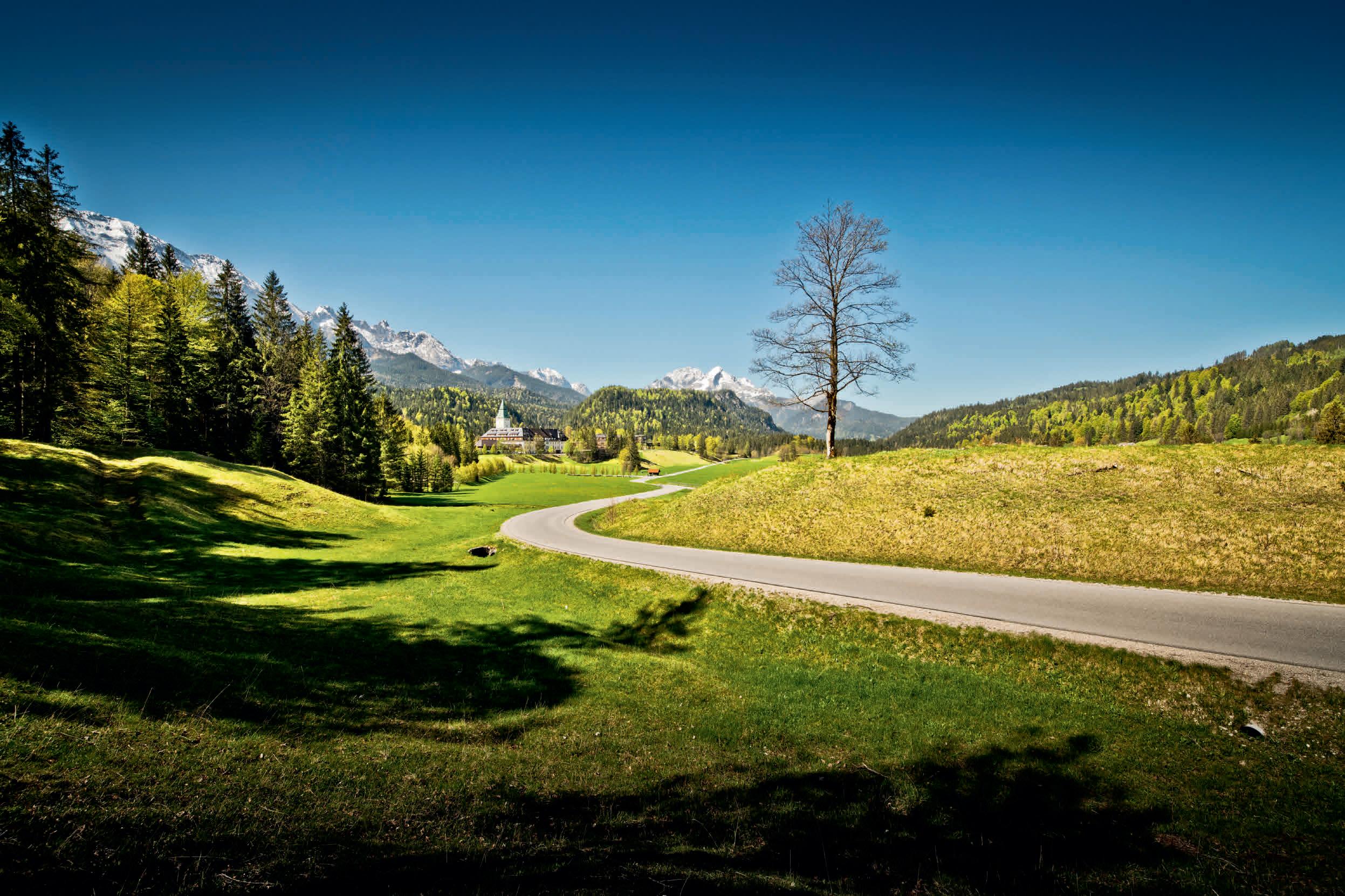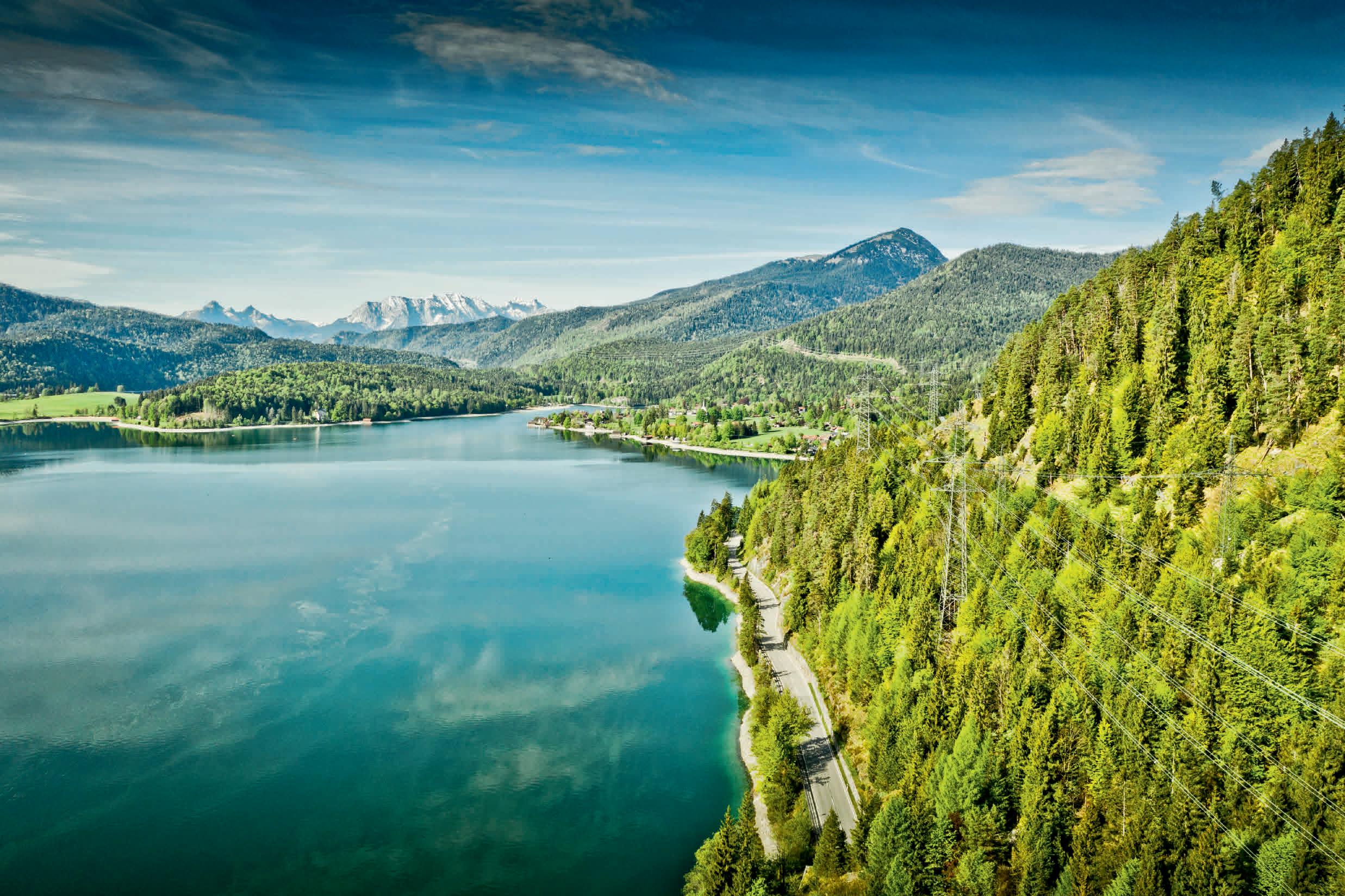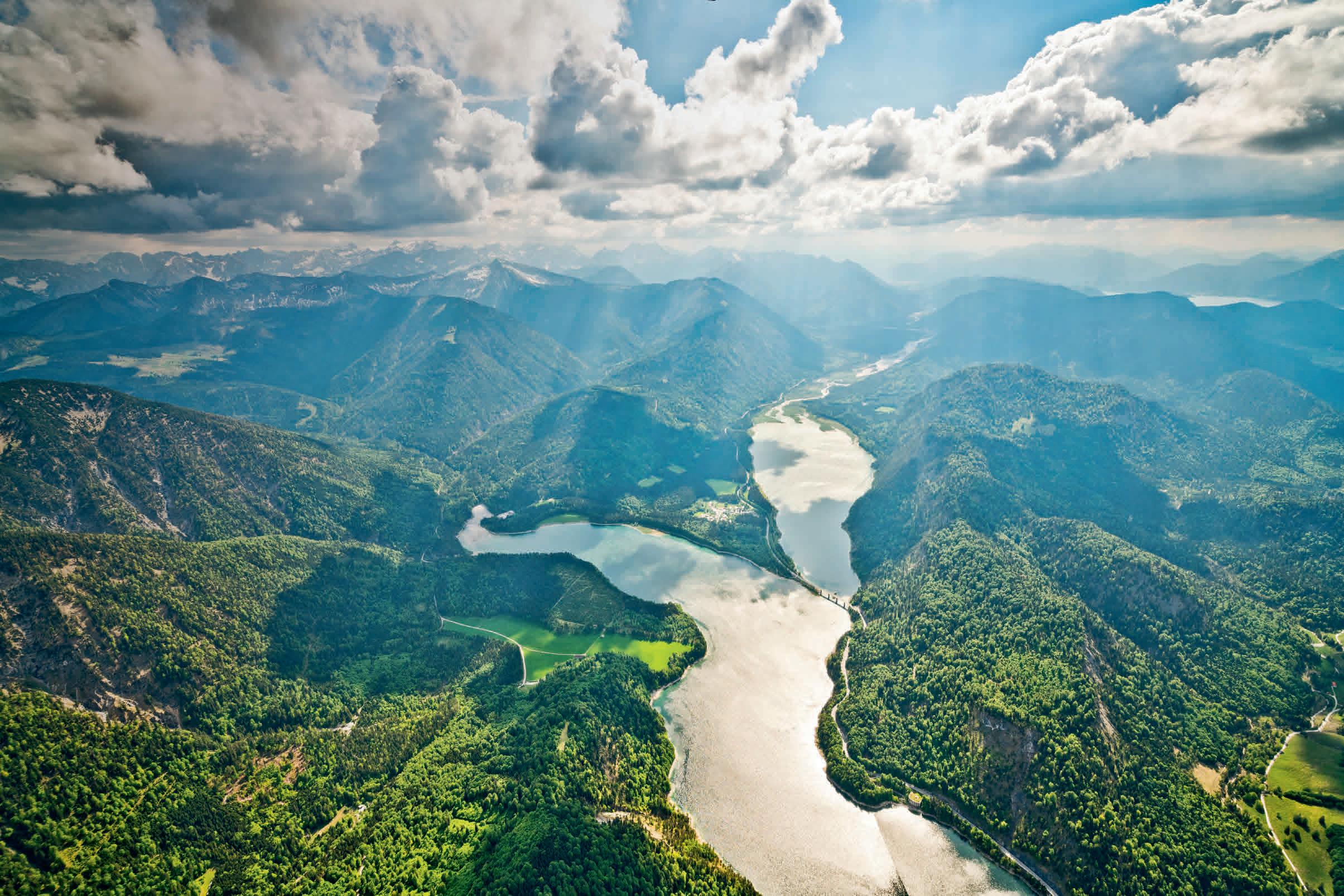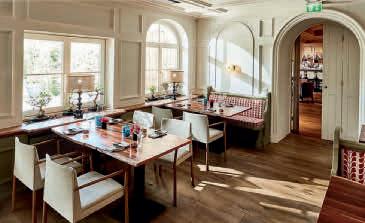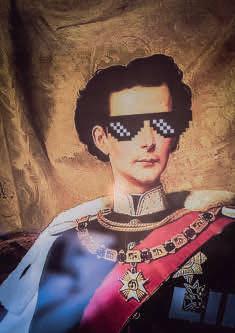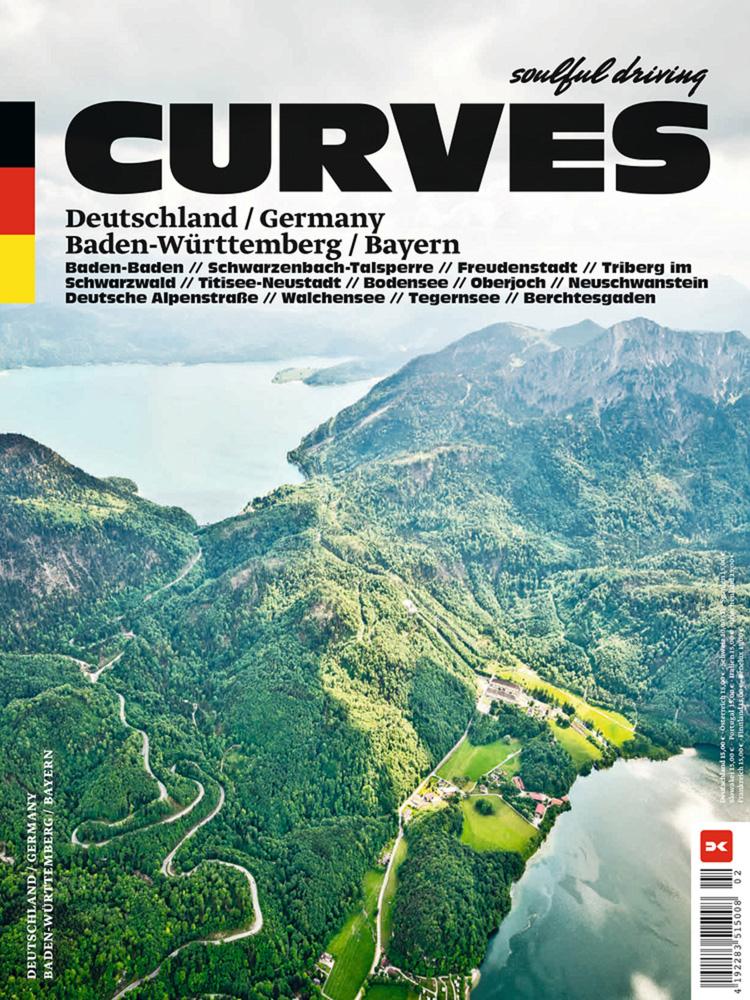
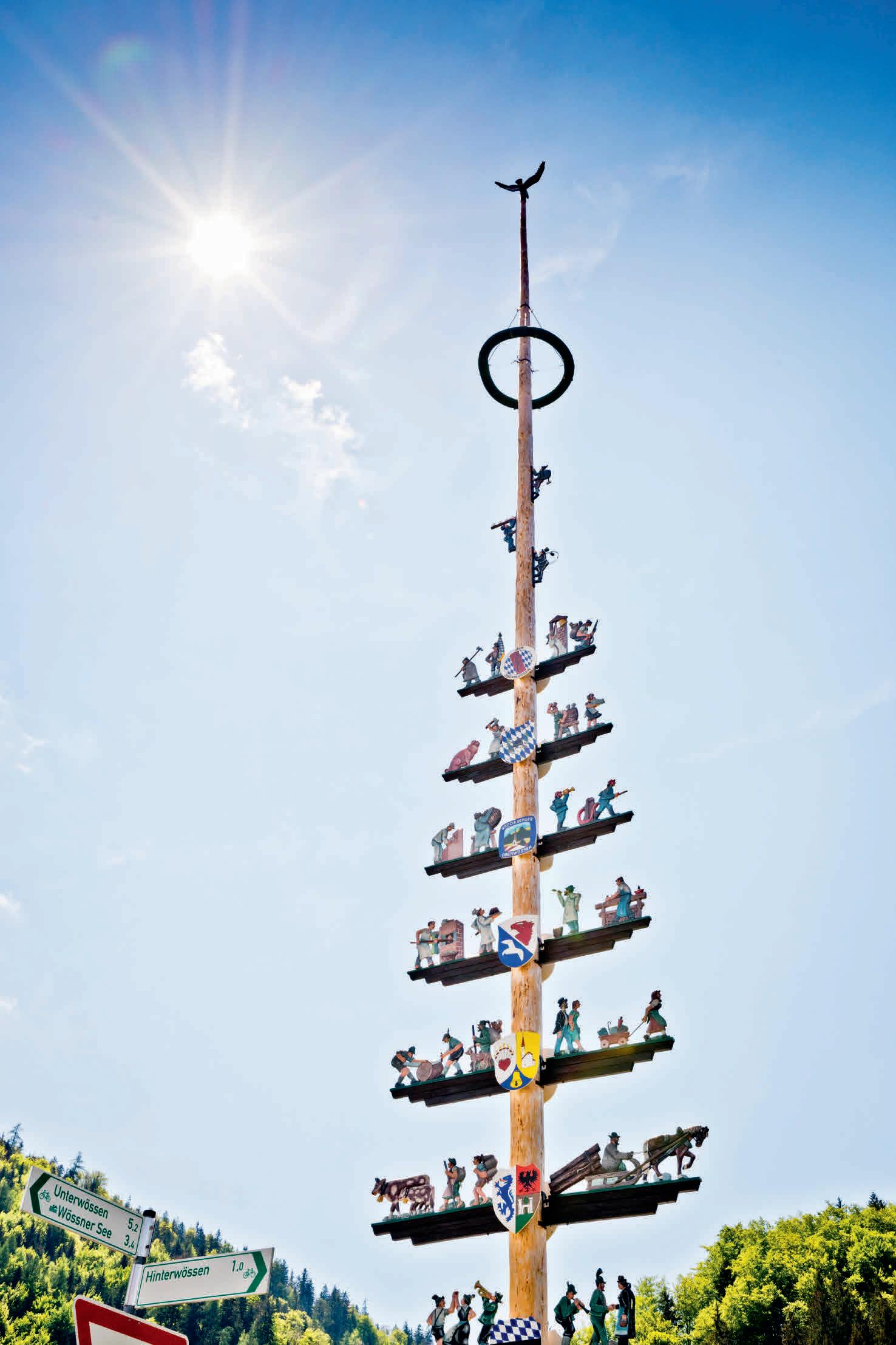

Rund 200 Kilometer lang zieht sich der Schwarzwald von Nord nach Süd, als erstes großes Hindernis auf dem Weg vom Südwesten Deutschlands in seinen alpinen Südosten. Anstatt ihn aber einfach zu überqueren, entdecken wir ihn beinahe auf ganzer Länge: In der Rheinebene bei Baden-Baden gestartet, werfen wir uns mit Elan auf die kurvigen Straßen des schroffen Nordschwarzwalds und folgen dann der Schwarzwaldhochstraße ins Herz des Mittelgebirges. Zwischen Freudenstadt, Schramberg und Triberg driften wir weit nach Osten ab, entdecken das Land der Bollenhüte und Kuckucksuhren. Der Süden des Schwarzwalds nimmt dann beinahe alpines Format an –auf dem Weg nach Freiburg folgen wir schwingenden Passrouten von Ost nach West.
The Black Forest stretches over almost 200 kilometers from north to south, as the first major obstacle on the way from southwest Germany to its alpine southeast. Instead of simply crossing it, we discover almost all of it: starting in the Rhine Valley near Baden-Baden, we throw ourselves zealously into the twisty roads of the rugged Northern Black Forest then follow the Black Forest High Road into the heart of the low mountain range. Between Freudenstadt, Schramberg and Triberg we drift far to the east, discovering the country of the Bollenhut and cuckoo clock. The south of the Black Forest looks almost alpine-like, on the way to Freiburg we head from east to west over sweeping pass roads.
Der Südschwarzwald hat es verdient, nicht in direkter Linie überquert zu werden, seine Landschaften und Momente sind vielfältig. Das alles sammelt sich in einem überschaubaren Gebiet. Hinzu kommt: Auch wer Fahrfreude sucht, wird hier fündig, die engen und kurvigen Straßen überwinden große Höhenunterschiede und sie sind äußerst abwechslungsreich. Von unserem Ausgangspunkt in Freiburg, der südlichsten Großstadt Deutschlands, fahren wir deshalb zuerst über das Höllental in östlicher Richtung zum Titisee, biegen hier erneut nach Südwesten ab und ziehen über die Feldberg-Region bis Todtnau. Von hier aus geht es zum Schauinsland und damit beinahe wieder nach Freiburg zurück. Auf kurvigen Strecken sind wir nun weiter nach Südosten unterwegs, über das Wiedener Eck und Todtmoss geht es bis nach Sankt Blasien. In einem letzten, weiten Bogen über den Schluchsee, das SchwarzaSchlücht-Tal im Süden und die Wutach-Schlucht am östlichen Rand des Schwarzwalds landen wir im Tal der Donau. Wir begleiten den noch jungen Fluss einige Kilometer und biegen dann nach Süden ab, das Ziel ist der Bodensee.
12,9mm 13,0mm
15,5mm 13,3mm13,0mm
Southern Black Forest deserves more than being traversed in a straight line, its landscapes and moments are rich, and all within a manageable area. Plus, anyone looking for a delightful excursion will find what they are looking for; the narrow, winding roads cover large altitude differences and are extremely varied. From our starting point in Freiburg, Germany’s southernmost city, we first cross the Höllental valley in an easterly direction to Lake Titisee, veer southwest again and travel across the Feldberg region to Todtnau. From here, we head to Schauinsland and almost back to Freiburg, before continuing over snaking roads to the southeast, across the Wiedener Eck and Todtmoss to Sankt Blasien. In a last wide sweep over the Schluchsee, the SchwarzaSchlücht Valley in the south and the Wutach Gorge on the eastern edge of the Black Forest, we land in the valley of the Danube. We accompany the still-young river for a few kilometers before turning south. Destination: Lake Constance.
15,5mm
gefüllter Fleisch-Zwiebel-Brötchen-Riesen-Ravioli, die man wahlweise in Brühe oder überbacken verschlingt. Dass die Maultaschen auch „Herrgottsbscheißerle“ genannt werden, Gottesbetrüger also, ist ein hübscher Fingerzeig auf die Religiosität des Südens: Während der Fastenzeiten glaubte man die Fleischfüllung im Nudelmantel der Maultasche vor dem Angesicht des Herrn gut verborgen. Aber die frommen Schwaben trugen auch auf andere Weise zur kulinarischen Fortentwicklung bei: Zuhause in Württemberg galt Fresslust als Verschwendung und Sünde. Dass es im badischen Schwarzwald, in Reichweite des schwäbischen Westens heute viele Sterne-Gastronomen gibt, soll der verstohlenen lukullischen Landflucht vieler Schwaben zu den sonst ungeliebten badischen Nachbarn geschuldet sein. In Bayern ist dann alles anders, aber genau so lecker und deftig: Weißwürste baden in süßem Senf, Schweinshaxen knuspern, Knödel dampfen und beim Nachtisch verrät sich der Bayer als Nachbar und Blutsverwandter des Österreichers: Süß, kross, fruchtig, frittiert und voll zuckriger Verderbtheit schlemmt man sich dem Herzstillstand entgegen. Die ganze Zeit ist der Bierpegel angestiegen – vom badischen Wein bis zum bayerischen Gersten- und Hopfenglück ist es ein weiter Weg. Glücklich, wer ihn ganz hinter sich bringen darf und keinen Tropfen auslassen muss. Es sei aber zugegeben, dass das bayerische Bier nicht umsonst Weltruhm genießt: Drall und fruchtig, angenehm herb, fein und rustikal zugleich schießt es für uns jeden Champagner aus den Socken. Genau so vielfältig wie Geschichte, Kultur, Menschen und Gastronomie des Südens sind seine Landschaften: Einen wirklichen Favoriten haben wir nicht, die eigentümliche Herbheit des Schwarzwalds ist uns ebenso lieb wie das milde Land nördlich des Bodensees, die bayerischen Seen und die wilde Schönheit der Bayerischen Alpen.
Sie spüren es: Wir können es kaum erwarten, endlich mit Ihnen auf die Reise zu gehen, bei Baden-Baden in den Schwarzwald zu ziehen und erst wieder von dieser großen Route quer durch Deutschland abzulassen, wenn wir es bis zum Königssee geschafft haben, ans östliche Ende Bayerns. Wir würden uns aber freuen, wenn sich außer einer großen Lust am unbekümmerten Unterwegssein auch eine Freude an den vielen Geschichten dieses Landes entfalten würde. Eines hat uns dieses Land und seine Geschichte nämlich intensiv gelehrt: Freiheit ist ein Privileg, keine Selbstverständlichkeit. Fahren im CURVES-Stil heißt also: Achtsam sein, respektvoll sein. Offen sein. Aber wem sagen wir das. Genau deshalb sind Sie ja hier.
this handcraft – for instance, when a prospective mother-in-law watched as a potential daughterin-law snipped the dough, and found that neither the consistency nor the shape of the spaetzle was acceptable. Redemption was possible, but only with the perfect maultasche, a kind of giant ravioli filled with meat-onion-bread and devoured either in a broth or as a gratin. The fact that these dumplings are also called “Herrgottsbscheißerle“ (Deceivers of God), is a charming hint to the religious inclination of the south: during Lent, the meat-filling in the maultasche ravioli was thought to be well-hidden from the Lord. But the pious Swabians also contributed to the culinary evolution in other ways: At home in Württemberg, gluttony was regarded as a waste and a sin. So, the Swabians made a stealthy exodus across to Baden’s Black Forest – resulting in a high density of Michelin star-studded restaurants today.
In Bavaria it’s different, but just as delicious and hearty: Weisswurst bathe in sweet mustard, pork knuckles crackle, dumplings steam and for dessert, the Bavarians reveal themselves as the neighbors and blood relatives of Austria: sweet, crisp, fruity, deep-fried and packed with sugar, feasting towards a heart attack. During this time, the beer tide has risen – it is a long way from the wines of Baden to Bavarian barley and hoppy happiness. Happy are they who can cover the distance without spilling a drop. Admittedly, Bavarian beer is world-famous for good reason: full and fruity, pleasantly bitter, refined yet rustic – for us, it blows any champagne out of the water. The landscapes are just as diverse as the history, culture, people and gastronomy of the south; we don’t have one true favorite, we like the peculiar ruggedness of the Black Forest as much as we like the mild landscape north of Lake Constance as well as the lakes of Bavaria and the wild beauty of the Bavarian Alps.
It’s palpable: We can hardly wait to set out on this journey with you, to travel from Baden-Baden to the Black Forest and only let go of this great journey across Germany once we have made it to the Königssee at the eastern end of Bavaria. It would give us great pleasure if you find delight not only in the carefree traveling but also in the many stories of this land. This country and its history have taught us one thing above all else: freedom is a privilege, not a right. Driving CURVES-style means: be mindful, be respectful. Be open. But who are we to say? That’s exactly why you’re here.
13,0mm13,3mm
6,0mm 13,0mm
14,3mm
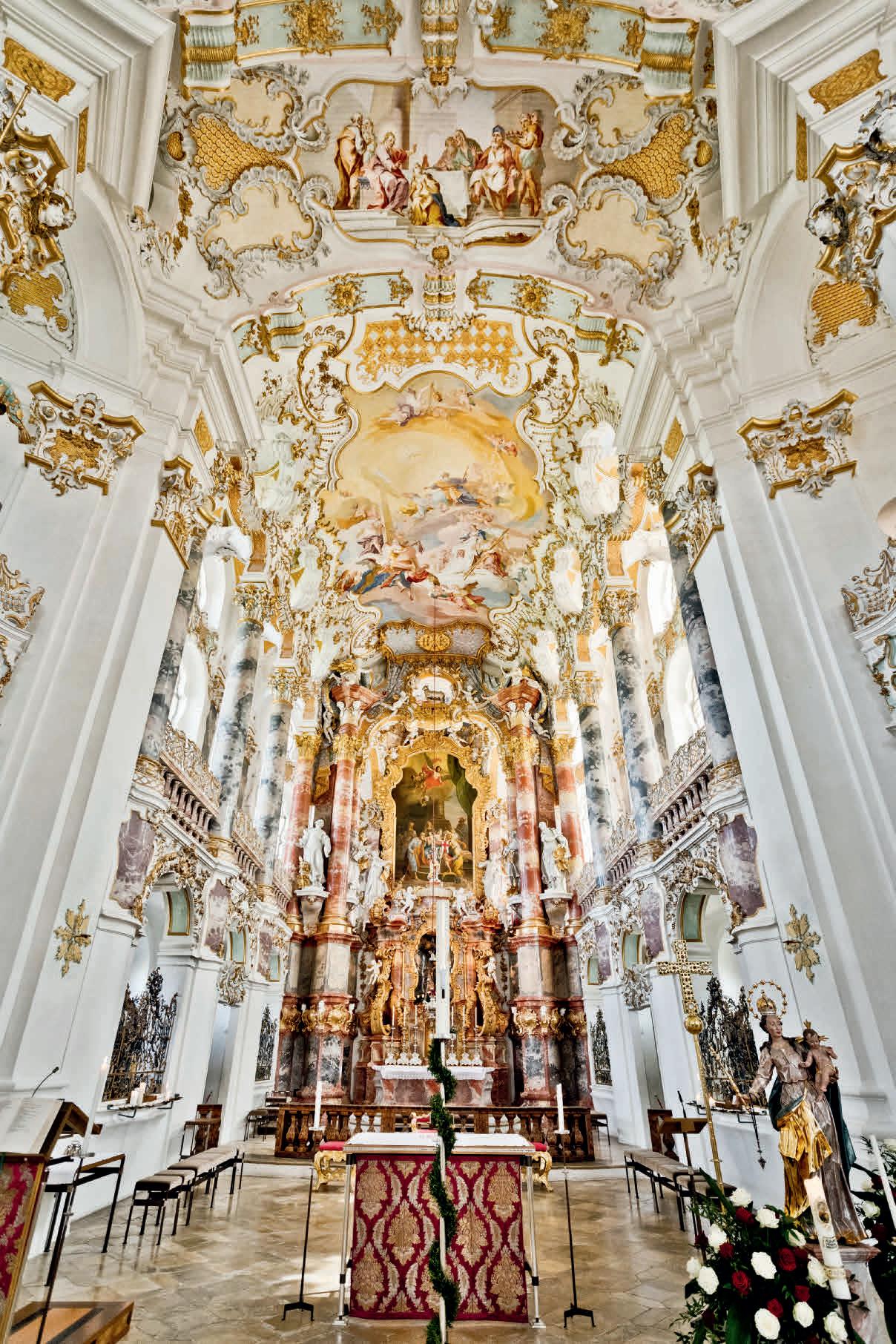
13,3mm13,0mm
13,4mm
14,3mm
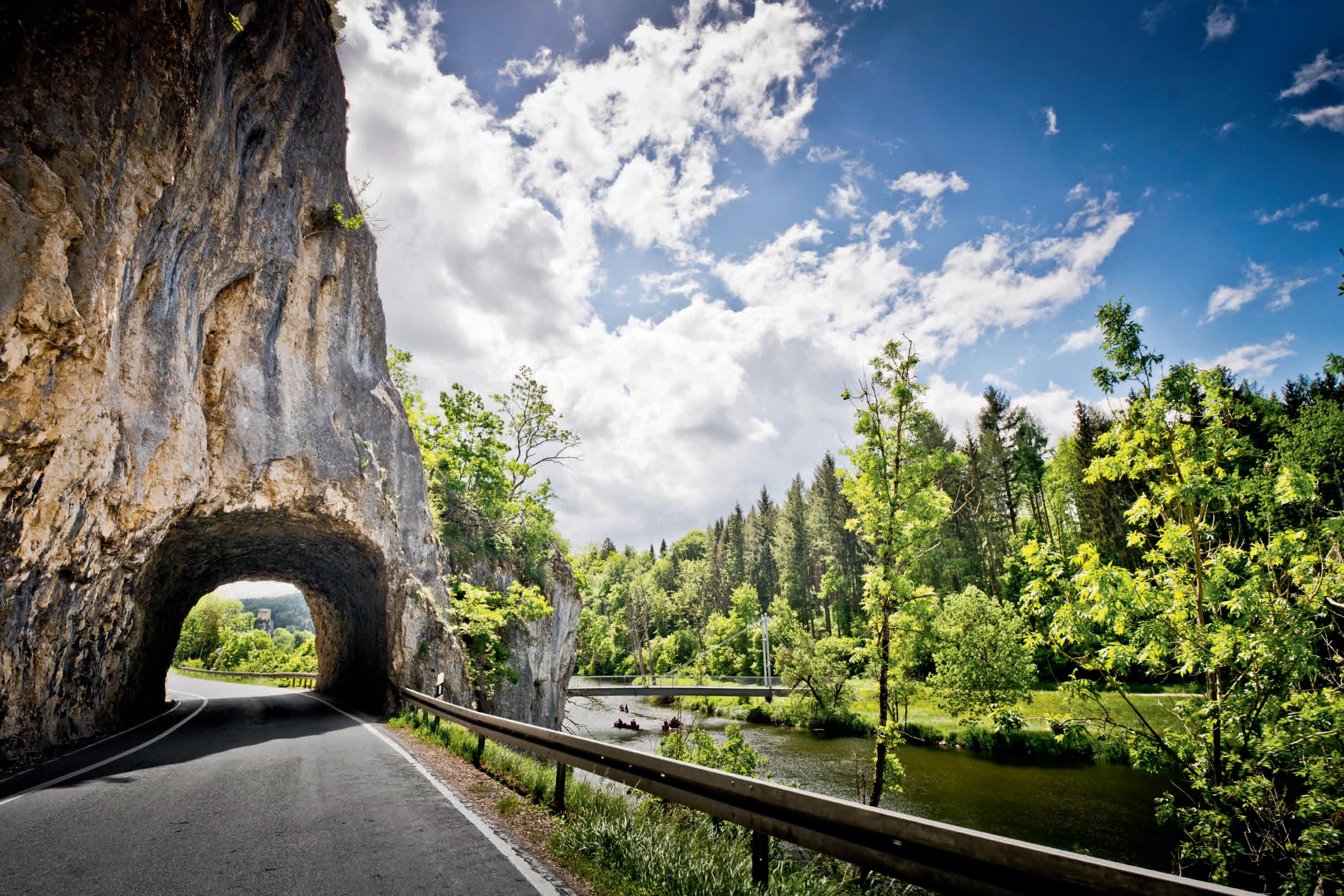

13,0mm13,3mm
13,0mm13,3mm


13,0mm
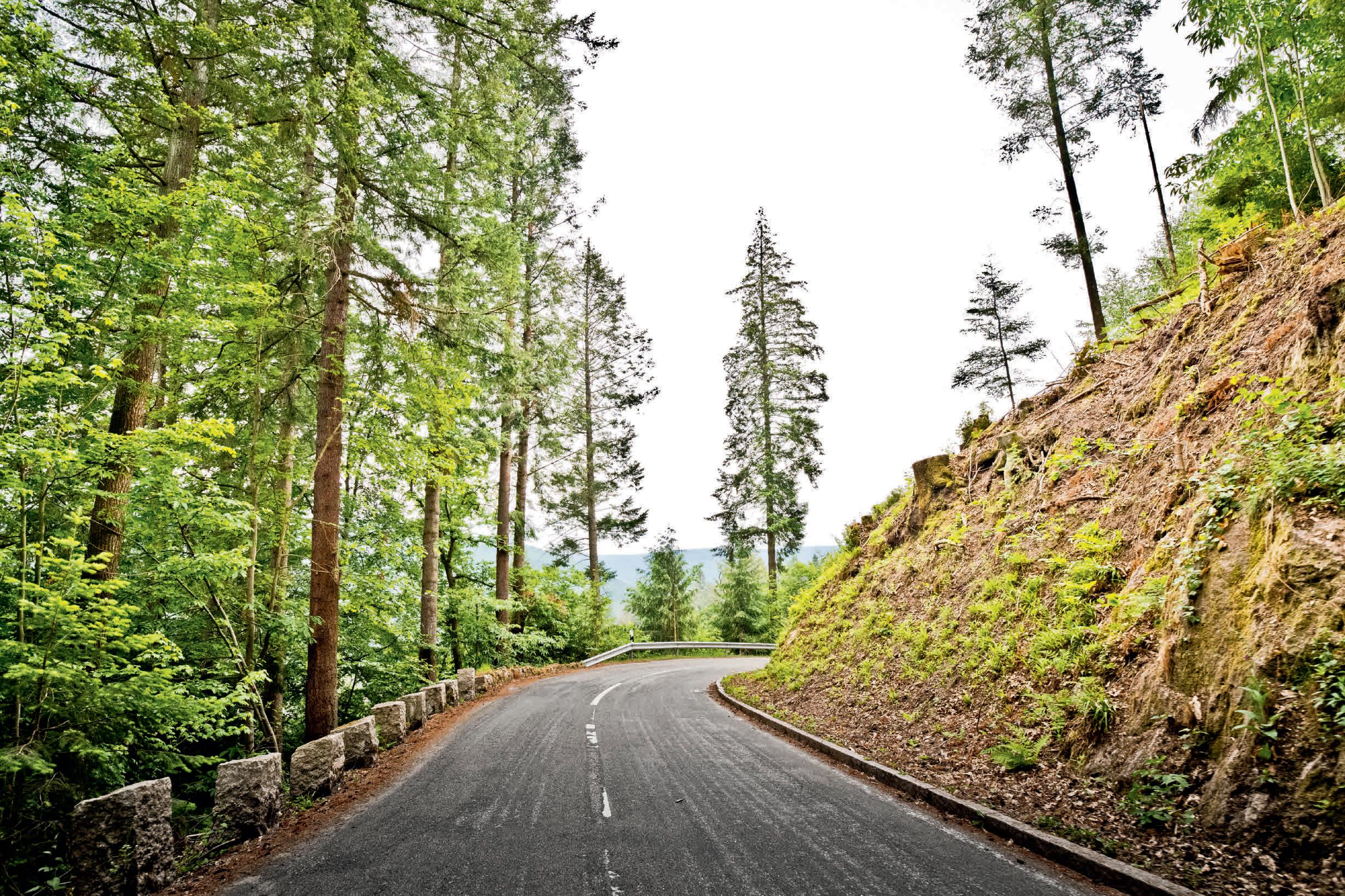

13,4mm600,0mm
12,0mm
5,4mm
12,3mm


13,3mm
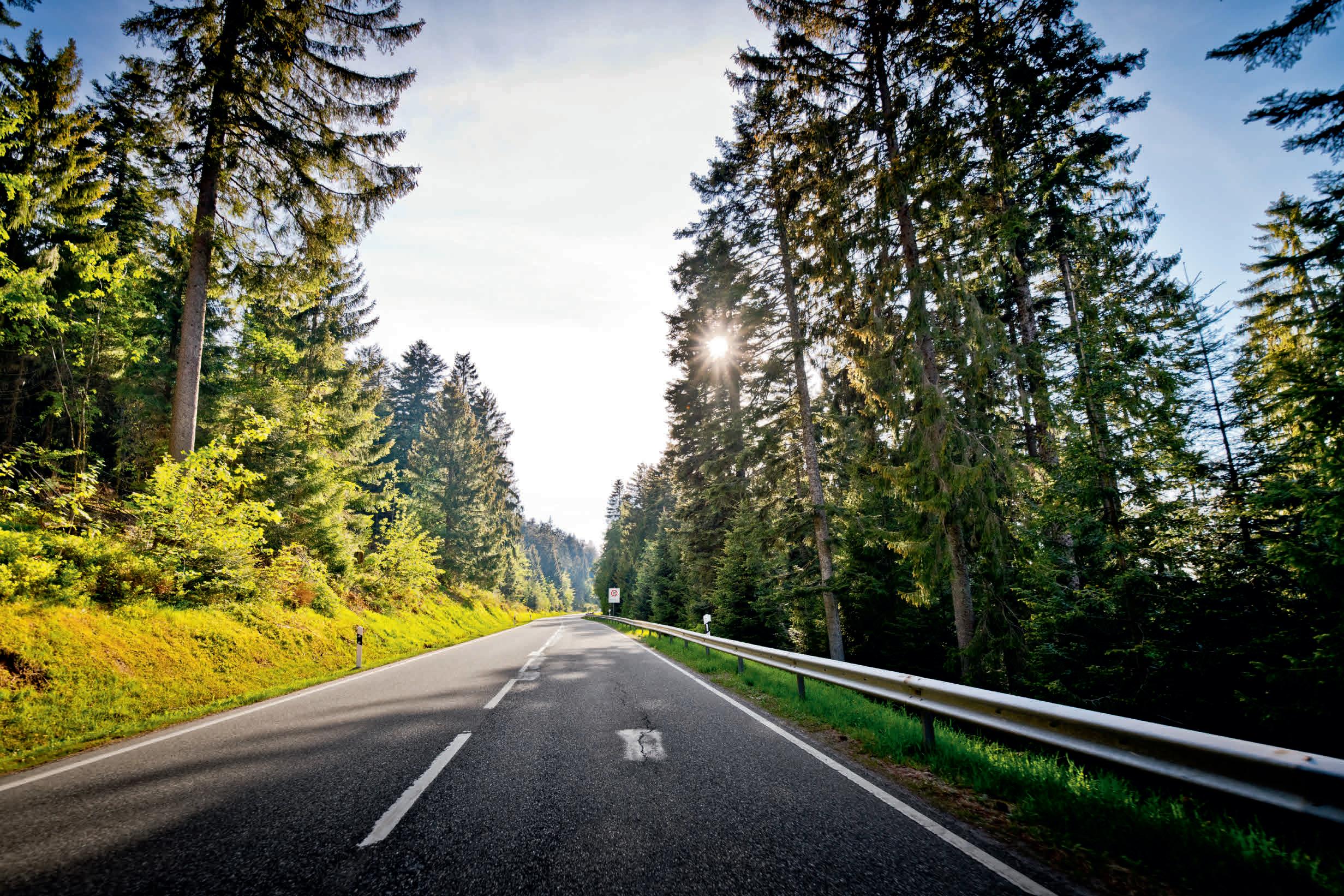

Welt. Die Häuser Rotterdams und Amsterdams stehen heute noch auf Fundamenten aus in den sumpfigen Boden gerammten Schwarzwaldtannen. Man könnte also sagen: Der Schwarzwald beginnt am Meer. Unsere kleinen Lachse schwimmen aber ungerührt weiter und verschwinden in den Weiten des Atlantiks. Das alles ist aber längst vorbei. Der Rhein, einst bedeutendster Lachsfluss Europas, ist keine Heimat für die wandernden Fische mehr. Industrie und Abwässer, unvorstellbare Begradigungen und gigantische Stauwehre haben die jahrtausendealten Lebenslinien abgeschnitten und den ursprünglichen Rhein gebrochen. Heute ist er ein gezähmter Fluss, langsam wird er wieder zum Lebensraum – aber die alten, geschuppten Wanderer aus dem Atlantik sind nie wirklich zurückgekehrt. Geflößt wird ebenfalls längst nicht mehr, der ausgebeutete Wald hat sich erholen können und die Menschen der Gegend wissen nur noch vom Hörensagen von der grausamen, unerbittlichen und glorreichen Arbeit ihrer Vorfahren. Oder gar nicht.
Auch wenn von den glamourösen Tagen Baden-Badens als Sommerfrische des europäischen Jetsets und Adels nicht mehr viel übrig geblieben ist, strahlt die Kurstadt immer noch eine mondäne „Alt-Weltigkeit“ aus, als wäre die Zeit ein wenig stehen geblieben. Als müsste jeden Moment eine Kutsche mit kokett behüteten Damen ums Eck biegen. Als würden die Grand Hotels immer noch auf Gäste in stampfenden Luxus-Cabriolets warten. Als wären Kurhaus, Festspielhaus und Casino immer noch im wiegenden Walzer-Rhythmus unterwegs, auf ewig gefangen beim Tanztee. Baden-Baden hat die zerbrechliche Aura einer alten Dame, wie eine Ahnung von Rosenduft, träumend vom Handkuss des Kavaliers. Spätestens in den Außenbezirken der Stadt ist dieses Gefühl aber verweht. Es bleiben alte Häuserzeilen, die sich schweigend und geraniengrüßend entlang der Oos drängen, während der Fluss in seinem gemauerten Bett in Richtung Rheintal gurgelt. Die Straße folgt dem Tal durch die zähen Ausläufer der Stadt und ihrer Vororte, immer weiter, und dann irgendwann ist sie frei. Schüttelt die letzten Häuser in ein paar Kehren ab und landet am Forellenhof. Hier strebt die alte Poststraße
Europe, is no longer home to these migratory fish. Industry and effluent, inconceivable engineering of the river course and gigantic weirs have cut the millennia-old lifelines and destroyed the original Rhine. Today, it is a tamed river. Slowly it is becoming a habitat again – but the old, scaled migrants from the Atlantic have never really returned. Rafting also disappeared long ago, the ravaged forests have recovered and the people in the area know of the brutal, relentless, glorious work of their ancestors only from hearsay. Or not at all.
Even if there is not much left of BadenBaden’s golden days as the summer retreat of the European jet-set and nobility, the spa town still exudes a chic, old-world feeling, as if time has stood still. As if a carriage filled with women wearing coquettish hats would swing around the corner at any moment. As if the Grand Hotels were still waiting for guests to arrive in their lurching luxury cabriolets. As if the Spahaus, Festspielhaus and Casino were still swaying to the rhythm of the waltz, forever caught in a tea dance. Baden-Baden has the fragile aura of an elderly lady, like a hint of rose fragrance, dreaming of a hand-kiss from a cavalier. On the outskirts of the city, this feeling fades. Here, rows of old houses, silent and dripping geraniums, huddle along the Oos, while the river bounces along its rock-walled bed towards the Rhine Valley.
The road continues along the valley through tenacious suburbia until at some point it finally breaks free; shaking off the last houses with a few hairpins and end-ing at a trout farm. Here, the old post road from Murgtal in the northeast joins up and we’re told that the loop over several kilometers is worth the detour for southbound travelers. As a warm-up, so to speak. So we take a left, fly up the mountain, left, right, left, right, and the following junction is definitely not a matter of opinion: Connoisseurs drive straight on, snake through the dense forest, shift down two gears where the monument to the road builders of the 18th century stands, take the kink with crisp efficiency and land victoriously a couple of kilometers further on at Eberstein Castle. Here, the earth’s magnetic field has a mysterious buckle – everyone stops, no matter
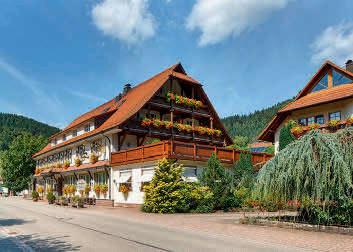
15,5mm
HOTEL HIRSCHEN
SCHWARZWALDSTRASSE 2-3
77709 OBERWOLFACH
WWW.HOTEL-HIRSCHEN-OBERWOLFACH.DE
13,3mm13,0mm
15,5mm
13,0mm13,3mm
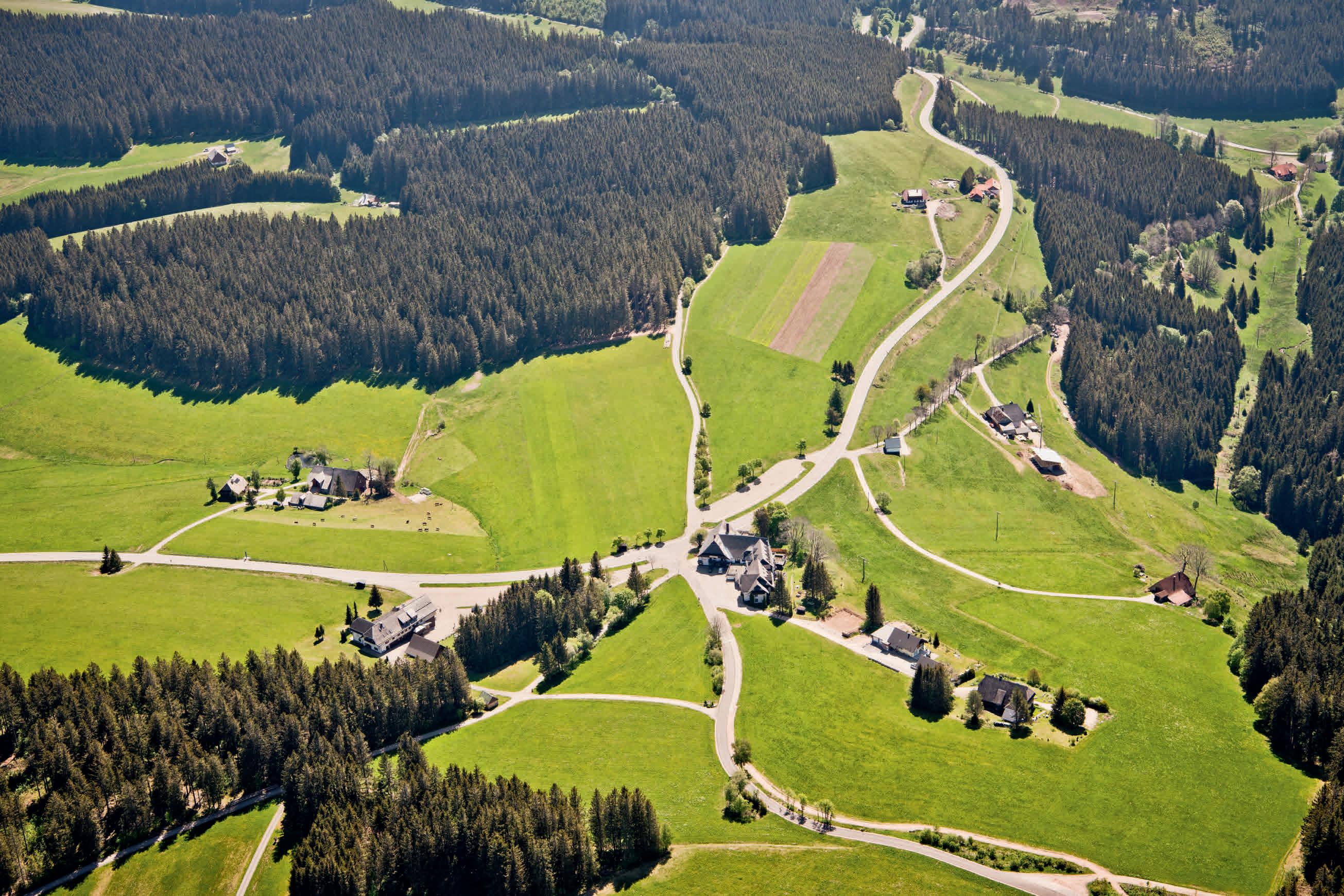

4,8mm
12,6mm
13,3mm



